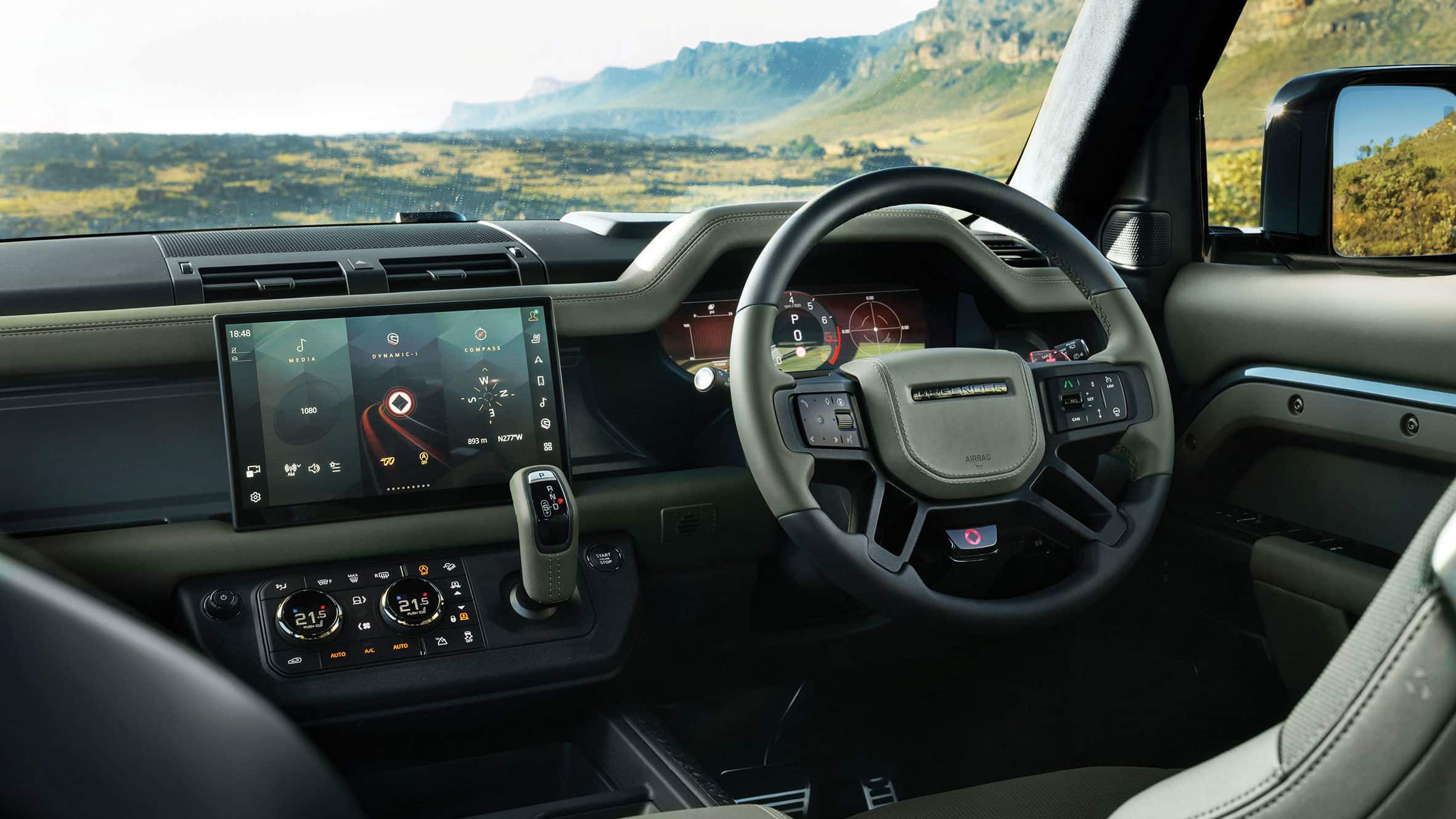Land Rover’s £160k ‘GT3’: Defender Octa First Edition review
Its name derives from the octahedral shape of a diamond, but is this Defender as tough as they come? Andrew Frankel finds out

Like a rampaging rhino on the gravel but how many Defender OCTAs will ever stray from asphalt?
I don’t think there could be a greater expression of confidence in the brand than this. A very broad rule of thumb is that in most premium car ranges the top-dog model will cost approximately twice what you’d pay for the entry level car which, of course, in no way reflects their relative cost of manufacture. But the ‘First Edition’ of this new Defender OCTA costs over £160,000, an entire six-figure sum more than the base car.
But here’s the thing. They’re all sold, so if you want an OCTA it’ll have to be the standard £145,000 version, which means you’ll miss out on the chopped carbon fibre interior trim.
So what, exactly, is going on here? The quickest and easiest way to understand what this car is, is to try to imagine the kind of car that would result if Land Rover decided to do a ‘GT3’ Defender. So while it’s abilities have undoubtedly broadened, that’s not the point. It’s how they’ve been sharpened that really makes the difference.

Choose the trick Goodyears and your OCTA’s speed will be limited, while your ride quality on roads will be affected
Providing the punch is a BMW 4.4-litre twin turbo V8 producing identical power and torque to what the same engine developed in the previous generation BMW M5. JLR’s own supercharged V8 was deemed unfit for this purpose and now survives in the Defender 90 alone. All OCTAs sit on the 110 wheelbase.
The changes to the chassis are both more interesting and telling. The ride height has been raised 28mm, the track widened by a substantial 64mm. The suspension hardware has been redesigned to keep the roll centre where it was and big Brembo brakes are fitted. There are three tyre options including a new triple-ply ultra-off-road Goodyear that carries a 100mph speed limit. But it’s the interlinked damping system that holds the OCTA’s secret. It’s similar in the way the suspension of the more expensive McLarens work and dispenses with the need for anti-roll bars. On road it can essentially eliminate body roll, off-road it provides more wheel articulation than would ever be possible without it.
“It’s the most fun I’ve had off-roading a road car for as long as I can remember”
The controlling software is no less impressive. In its new ‘OCTA’ mode, designed for high-speed off-roading, the car knows when it is in the air and braces the dampers for impact. It actually allows the wheels to lock just a bit under heavy braking, so as to build up gravel, snow or mud in front of the tyre to help it slow further. It increases roll rate to maximise traction but stiffens the dampers to retain body control. It also directs 80% of its torque to the rear wheels, which is as much fun as it sounds.
Or it is when you’re sideways on gravel at some unmentionable speed miles out of Cape Town in the middle of absolutely nowhere. I am painfully aware that this is how approximately no OCTAs will ever be used, but if I only tested cars in the environment in which they’d most commonly be found I’d never get out of SW3. Land Rover thought it important to show their car could do it, even if its owners never would, and given that the credibility of Land Rover now sits on the Defender’s shoulders (ask what plans it has for the Discovery and you’ll find the subject gets changed), I tend to agree. Besides it’s the most fun I’ve had off-roading a road car for as long as I can remember.
But there is something you need to know. For all its speed and ability to make you feel like Elfyn Evans, there’s hardly anywhere it can go where that £60k base Defender wouldn’t go too. The standard car was already just about the most capable off-roader on sale and the OCTA does nothing to change that.
What it changes – ‘transforms’ is probably a better word – is the speed and ease with which it does it. There were times when I was scaling impossible-looking rock faces and clambering over vast boulders where the disparity between the drama you were looking at and the calm in the cabin made me laugh out loud. And then, two days later, on the long slog back to civilisation, it swept through the vast open spaces like a grand tourer.
Even so it’s worth highlighting a few things about the OCTA, even if they’re likely to be bought as fashion items. First, the interior is not that of a £160,000 car; it’s a £60k interior with a few bits tacked on. It’s not good enough. Second, if you spec yours with the Goodyears, it comes with that 100mph limiter which you can’t turn off. Third, those tyres degrade both the ride and refinement on normal roads, so you should think really hard before choosing them.
But I still really liked it even if I know the Defender I’d enjoy most does not even exist. Which is an OCTA on the 90 wheelbase, pumped up, stripped out and with an even more special ‘yob’ mode for its chassis set up. It seems an obvious thing to do but when you ask about it, the PR bat it away without quite denying it’ll happen. I hope it does because the extraordinary thing about the OCTA is not how far it has already stretched the Defender brand, but how much further, even than this, it could clearly go.
Land Rover Defender Octa First Edition
- Price £160,200
- Engine 4.4 litres, eight cylinders, petrol, turbocharged, mild hybrid
- Power 626bhp
- Torque 553lb ft
- Weight 2510kg (DIN)
- Power to weight 249bhp per tonne
- Transmission Eight-speed double clutch, four-wheel drive
- 0-62mph 4.0sec
- Top speed 155mph (limited), 100mph on option tyres
- Economy 21.0mpg
- CO2 302g/km
- Verdict Rollocking fun off-road.

